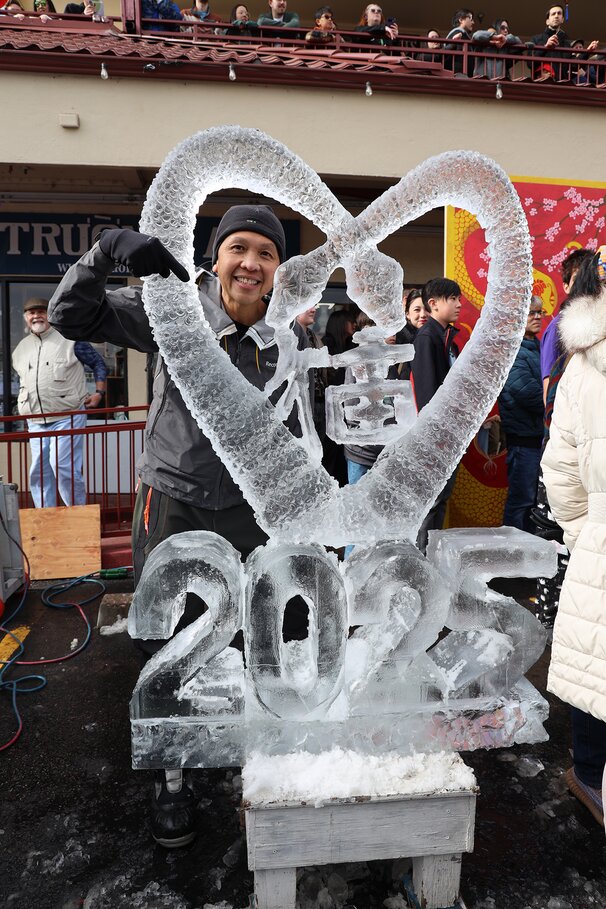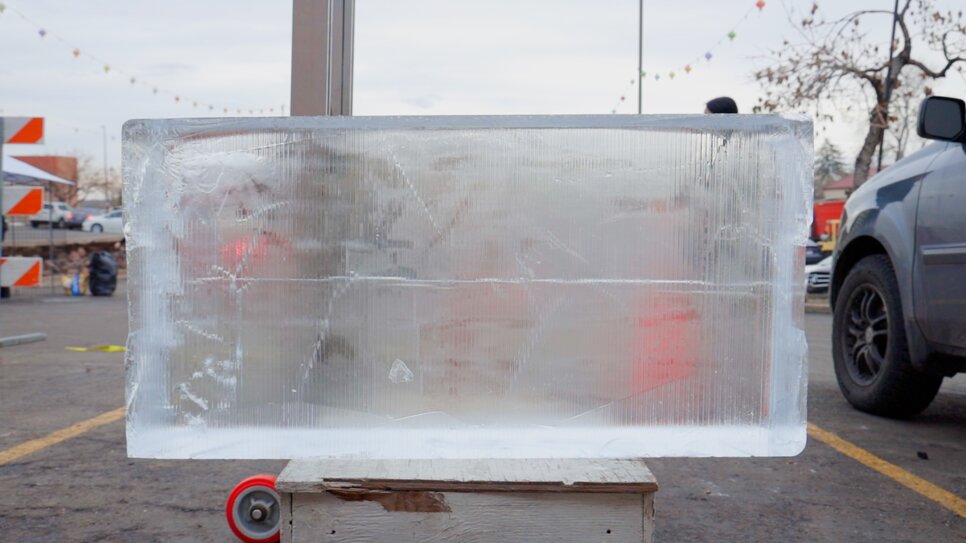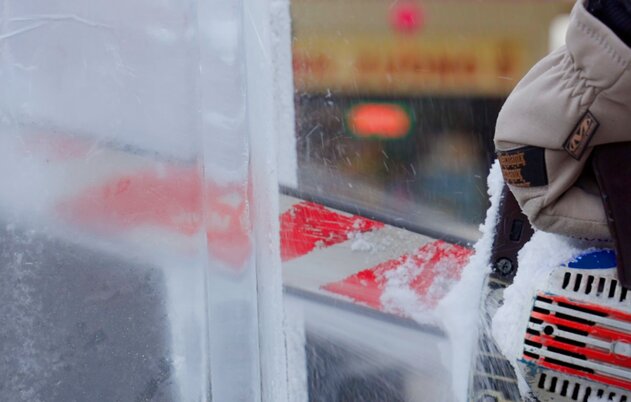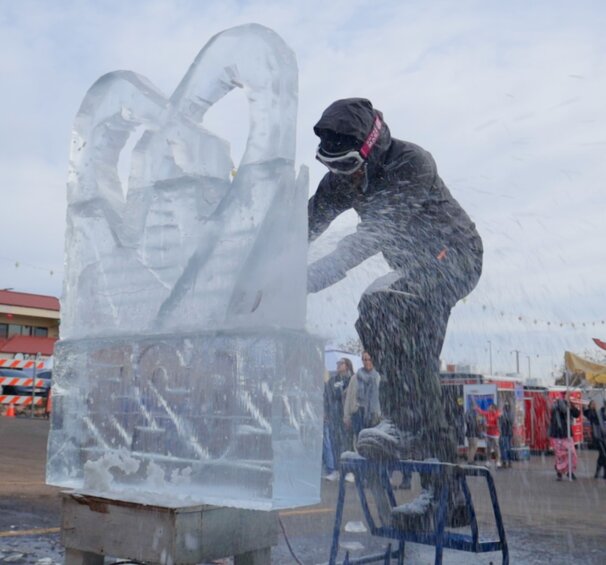No need for paintbrushes. This artist prefers a chainsaw.
share

DENVER — Two days before his first ice carving competition, Luan Bui ran his thumb into a bandsaw. He received nine stitches to save the finger and competed anyway, ignoring his doctor’s advice to not endanger the thumb.
That was about 20 years ago. While carving ice sculptures for the Denver Zoo a couple years ago, an airborne piece of ice cut through his left cornea, and now he can barely see out of that eye.
But Bui, a lifelong artist and a full-time engineer, keeps coming back for more.
Bui, who is Vietnamese, said the arctic art form is a fulfilling, creative challenge and an opportunity to connect with his community.
His first and most consistent ice carving commission is the Far East Center’s Lunar New Year celebration, where he’s performed almost every year for 10 years.
“I walked in there with literally nothing. I got a couple pictures and I told them, ‘This is what I do. Would you like to have this with your festival?’” Bui said.
“It was just enough for me to buy two blocks of ice. I did not make any money, but that got me where I'm at now, today. So it means a lot for me. I honor their business, and it’s an opportunity for me to give some back to the community.”
Video: Carly Rose, Rocky Mountain PBS
Bui never creates an ice sculpture in private. The performance of carving the ice, whether at a competition or at an event as a commissioned piece, is just as much part of the art as the finished product.
“One thing that I like about ice carving is [you] just create something out of ice and it just melts away,” Bui said.
“I think a part of entertainment in general [is] to capture the moment. It came really fast, and it goes away. And that's a memory. The pictures mean a lot more than something just permanent, just there.”


About two decades ago, Bui saw a bulletin in the newspaper announcing an ice carving demonstration in Longmont, where he lives with his family. He showed up early and fell in love with the art form just by watching someone else do it.
He came back later, grabbed a chunk of ice that had fallen during the demonstration and buried it in the snow to preserve it. Two months later, he used that chunk of ice to carve a small bear to top his daughter’s birthday cake.
After that, Bui was hooked.
He sought out instruction from the man who performed the initial demonstration and briefly learned from him. Most of what Bui learned, he picked up over the years at ice carving competitions.
“I did not know that I ever could be an artist,” Bui said. “I’m up for any challenge. Anything relating to art, I would like to do it.”
Growing up in Vietnam, Bui sculpted small animal figurines out of natural clay and trade them for other toys. He constructed paper crafts for his mom, a teacher, to use in her classroom.
A principal manufacturing engineer for an aerospace company, Bui has worked with machinery his entire professional career. He’s applied this mechanical knowledge to his ice carving process.
Bui gets his carving blocks from a friend who produces ice in Loveland. Each block is about 265 pounds. Bui built a movable platform, which he can raise and lower with a hand crank, to help him maneuver the ice blocks into position.



Bui stacks and freezes the ice blocks together, filling the cracks between blocks with snow to seal them. Then it’s time to bring out the chainsaw.
Bui is no stranger to operating power tools because of his job. But he still found the chainsaw nerve wracking at first.
“You’re afraid that you’re cutting too much, and that's always true because you can’t put it back on,” Bui said. “But that's why it takes a long time, because you take a little bit at a time.”
He’s learned from experiences to cut as close as possible to the desired shape and clean it up after using finishing tools, like an ice pick and a homemade die grinder. This saves time, which is a precious commodity for ice.



Ice itself doesn’t come cheap. Bui said he buys ice from his friend — already at a discounted price — in Loveland for $75.
Tracie Bennitt, founding organizer of the Cripple Creek Ice Festival, said she pays about $50 per ice block, but she buys in bulk — almost 800 blocks — from a company in Ohio.
The cost of materials is one of the reasons why Bui only carves ice for commissioned events or competitions. But he also loves creating in front of an audience.
“I can carve wood, I can do other things, but ice is just so cool,” Bui said. “When you do something that people feel is really cool and really interesting, that boosts your energy. And it makes you love it more.”
For the first time, Bui will compete in the Cripple Creek Ice Festival this year under his own name. He previously participated in the competition assisting other carvers.
The Cripple Creek Ice Festival dates back to 2000. This year’s event runs Feb. 15-23 on Bennett Avenue in Cripple Creek and is free to attend.
Type of story: News
Based on facts, either observed and verified firsthand by the reporter, or reported and verified from knowledgeable sources.
Based on facts, either observed and verified firsthand by the reporter, or reported and verified from knowledgeable sources.
To read more about why you can trust the journalism of Rocky Mountain PBS, please visit our editorial standards and practices page.